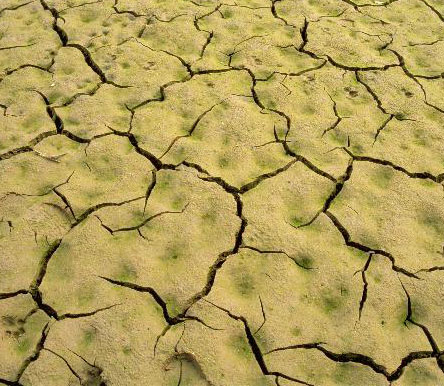Background
Preamble

In drought, management is often under pressure to make sure there is enough water to meet human and industrial needs.
However, it is also important to make provision for the survival and continued function of river ecosystems.
Australian river ecosystems are fully capable of surviving droughts when they and their surroundings are in a natural state and not also having to supply water for human uses. But there is real scientific concern that humans have modified much of the Australian environment to such an extent that we can no longer expect all freshwater ecosystems to survive and recover after drought.
In these webpages we give a scientific viewpoint of the impacts of drought on waterbodies. We also list some reactive and proactive strategies that can be, and are being, made by management to improve the after-drought recovery of freshwater ecosystems.
To be effective, both reactive and proactive responses to drought require good understanding of the ways in which ecosystems and water resources function. For freshwater ecosystems, reactive responses aim to avert a crisis and preserve vital functions in biota during drought. Proactive planning, on the other hand, recognises the inevitability of future droughts in Australia and the uncertainty of future water supplies in a variable and changing climate.
For human water supplies, reactive responses might be water restrictions, and tapping into previously unused groundwater supplies. For ecosystems, they include providing flows downstream of reservoirs, and protecting refuge habitats. Proactive responses for human water supplies might be a use of 'market-based instruments' for managing demand, and developing new or alternative sources of water, while for ecosystems proactive strategies in use include restoration in catchments and riverbank zones, and the building of fish-passes.
Some important research questions related to the issues raised in this document include:
- Can we recognise and map key refuge habitats at large landscape scales?
- How many refuge habitats are necessary to protect ecosystem resilience and where do they need to be located within the landscape?
- What are the attributes of refuge habitats that give resilience to aquatic ecosystems, and how can we effectively protect or restore these qualities?
- How can we share water with the aquatic environment when human users want it during drought?
- What are the likely ecological consequences of using alternative sources of water?
eWater CRC is addressing these and other important questions in a number of our current research and product development projects.
The extreme nature of this drought (as at spring 2007) means that scientists and managers are often outside the range of practical experience and learning. Therefore, these webpages, particularly those about drought in ecosystems, aim to outline 'best practice' as we understand it at present, rather than to make absolute statements of cause and effect. They identify generic hazards and generic ameliorative actions that should be considered by all authorities and non-government organisations with a practical stake in river management.
Disclaimer:
The information in these pages is for guidance only, and should be considered in a risk-management context. Advice on ecological effects is presented with the aim of minimising the likelihood and/or consequence of particular adverse environmental outcomes under an extreme set of climatic circumstances. eWater accepts no liability for any adverse consequences that may arise from use of the information on this website.
We have not attempted to prioritise environmental hazards, nor the management actions to be taken in specific river and floodplain ecosystems - this a process that must always happen at the local level using local knowledge of river conditions and circumstances.

